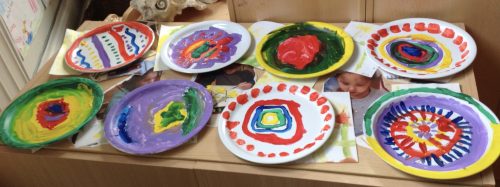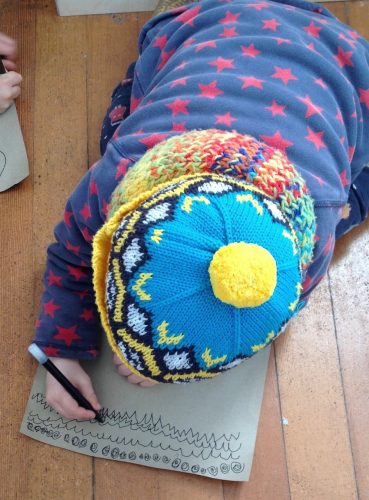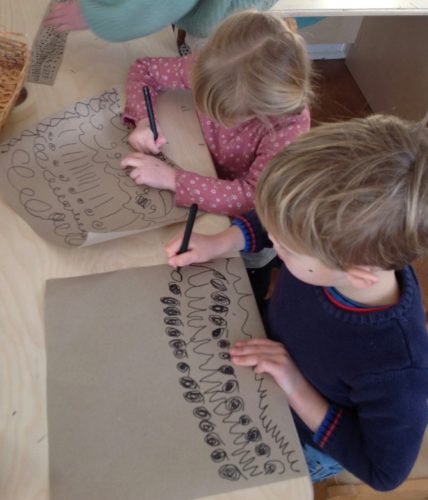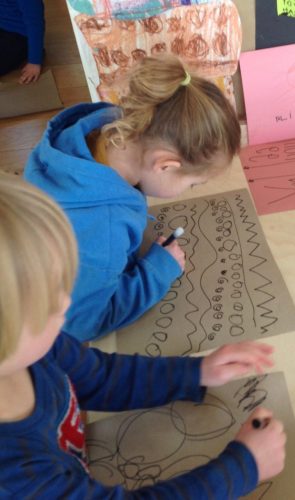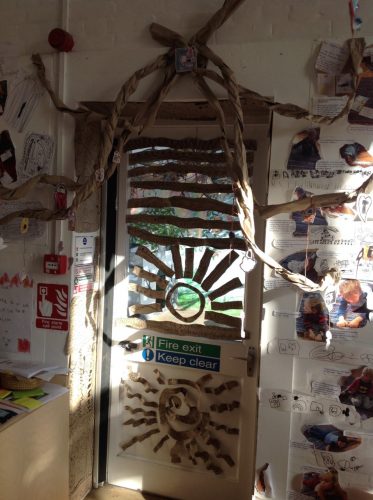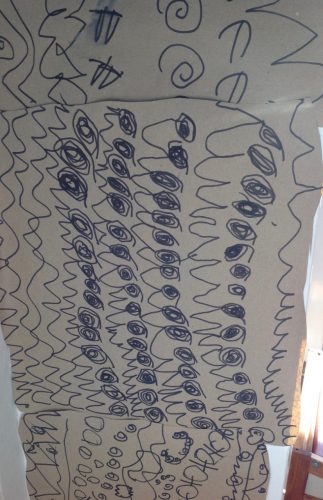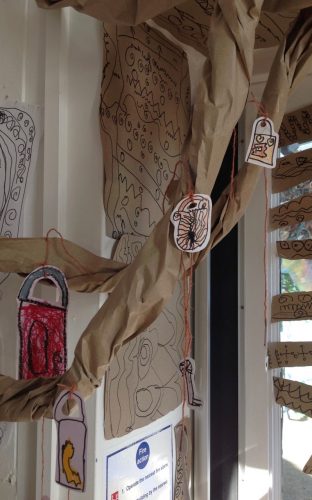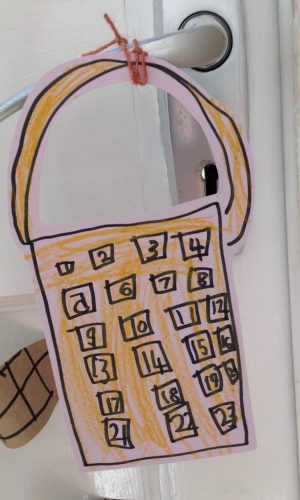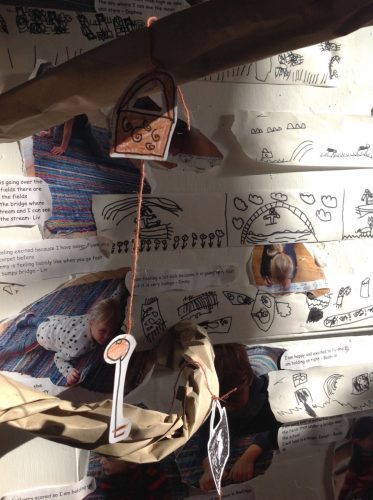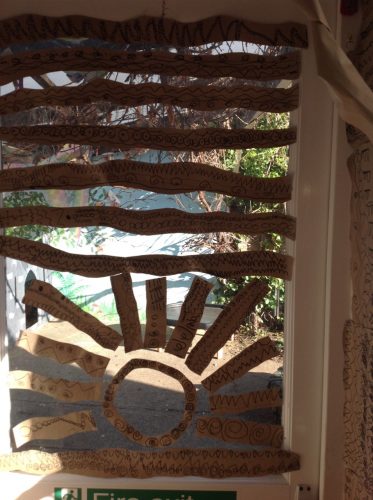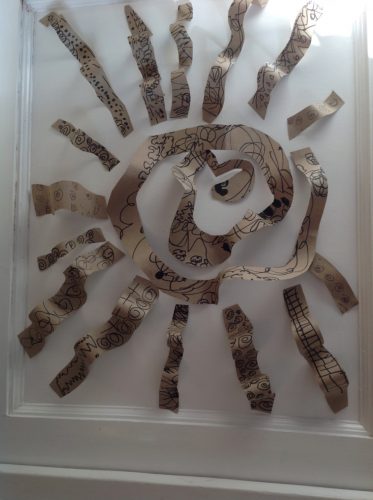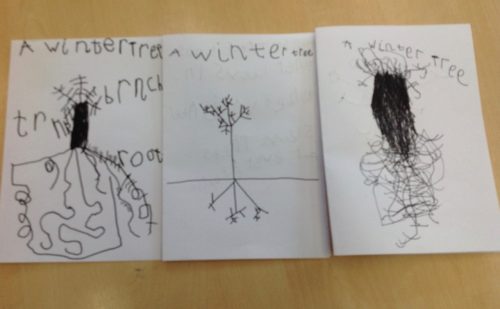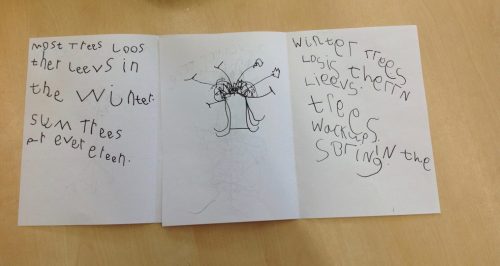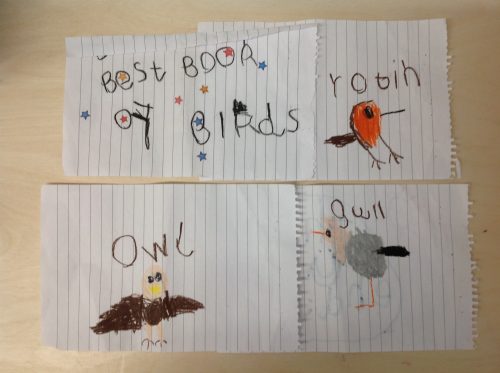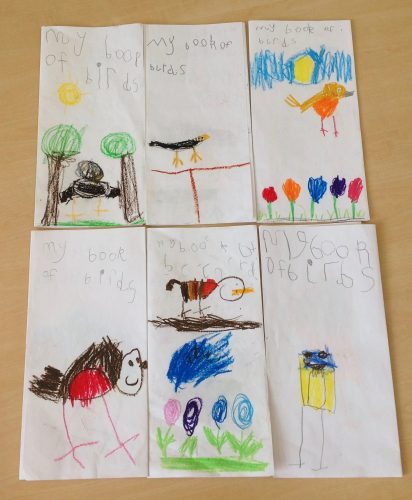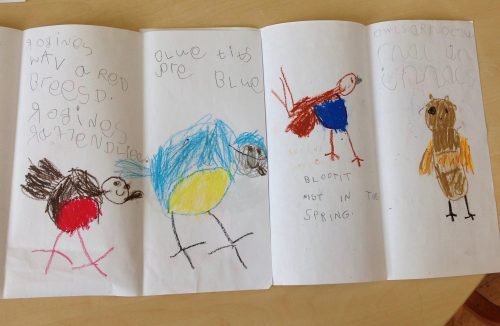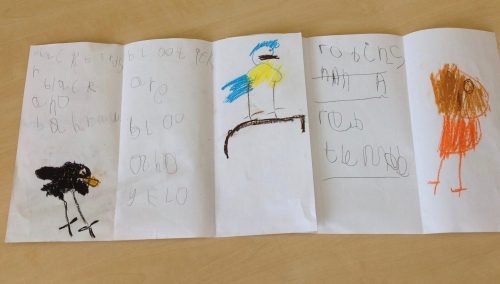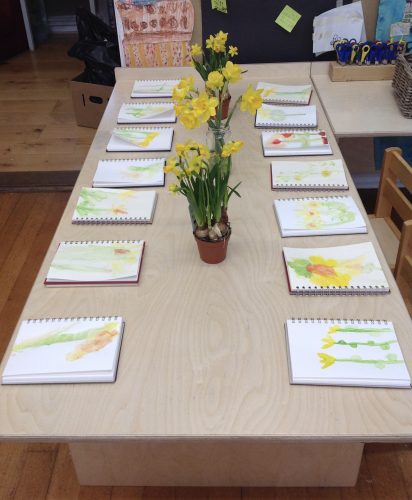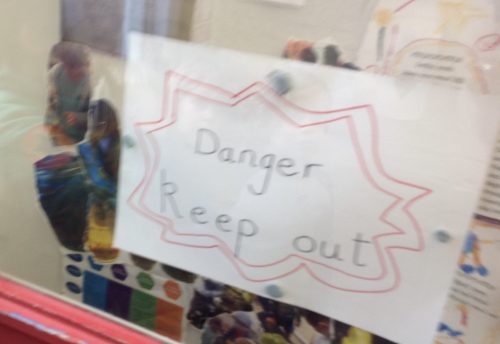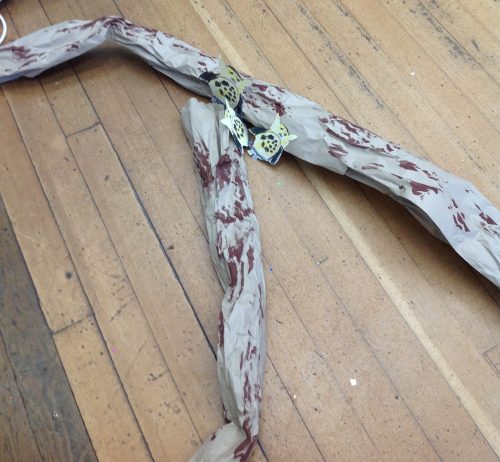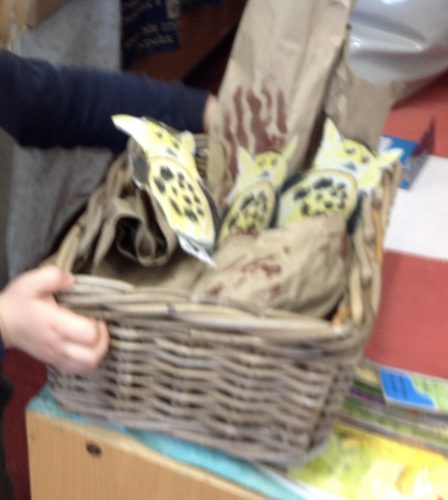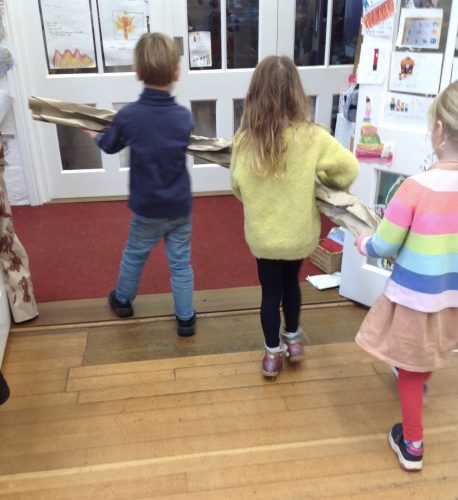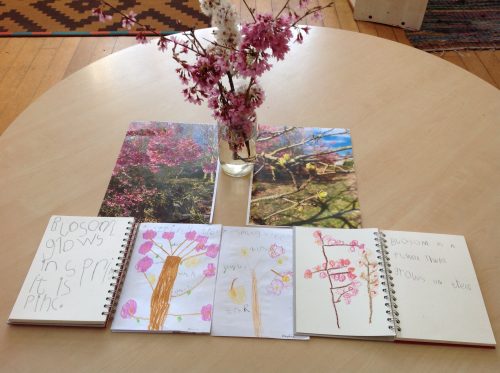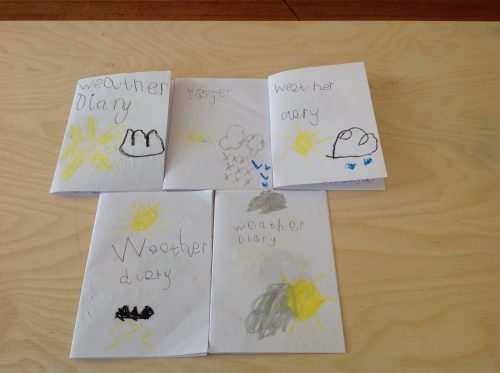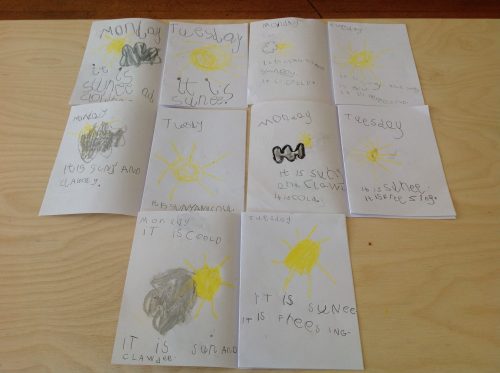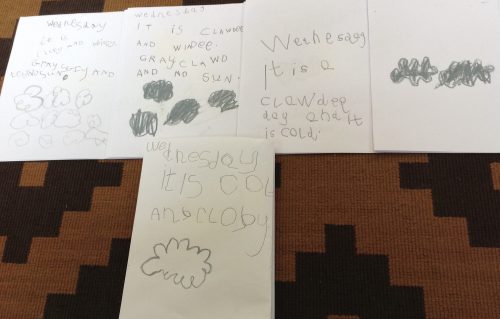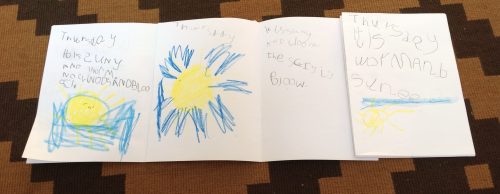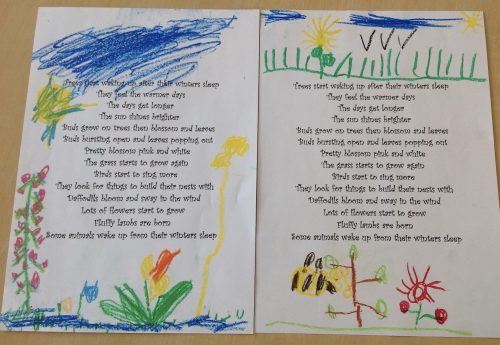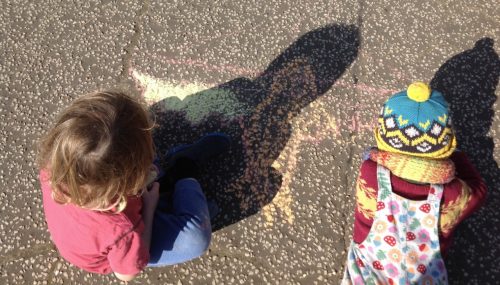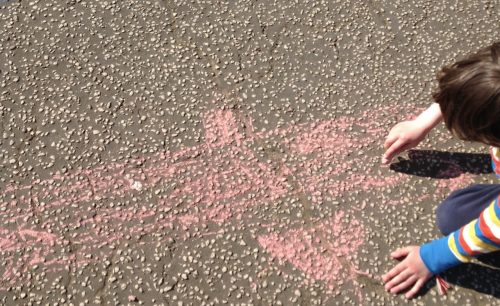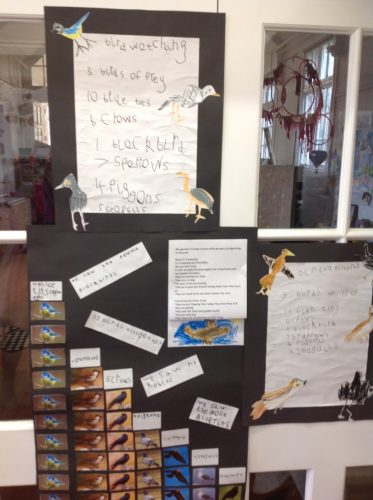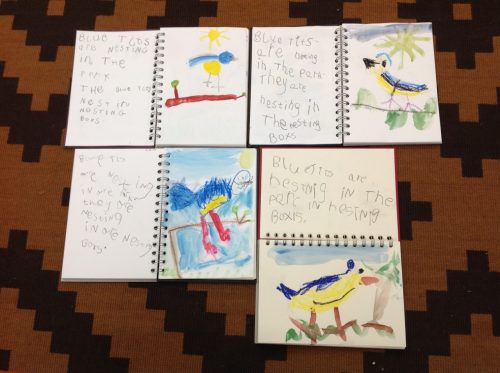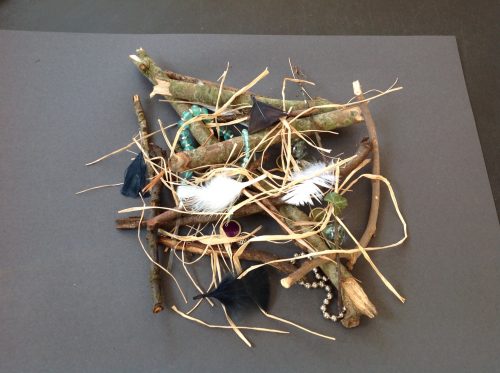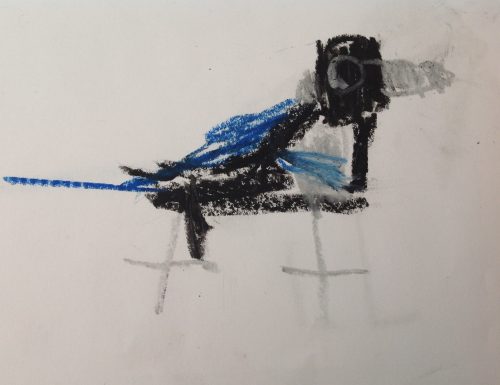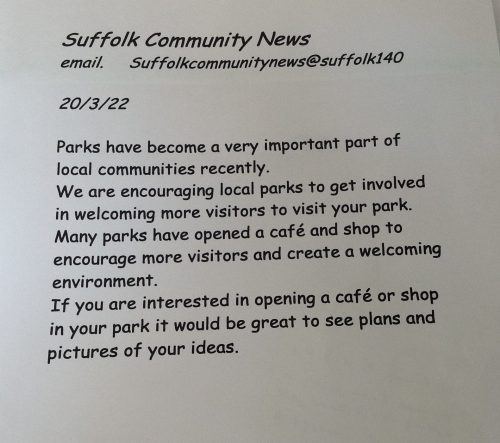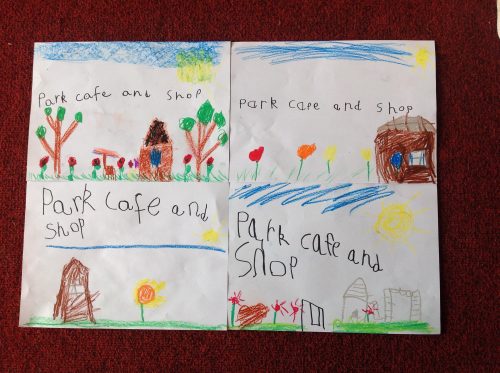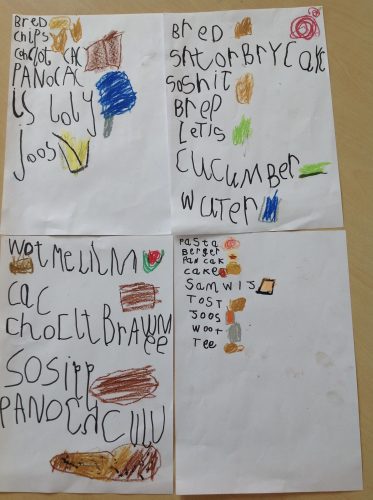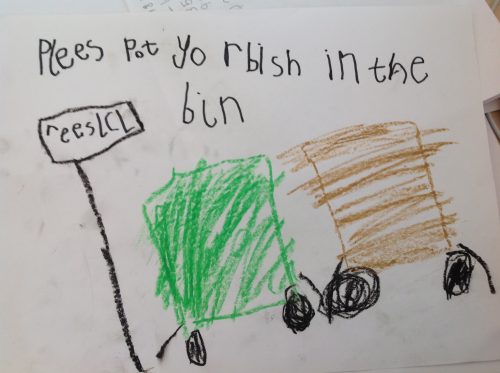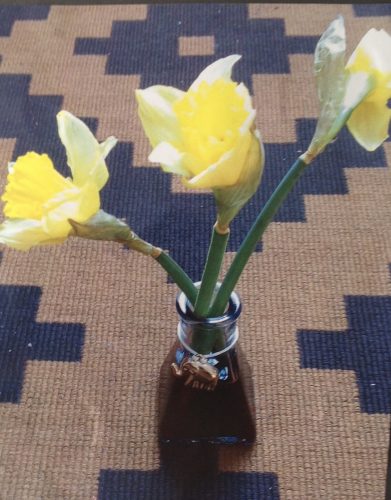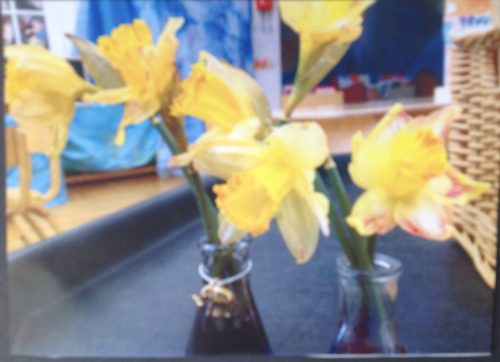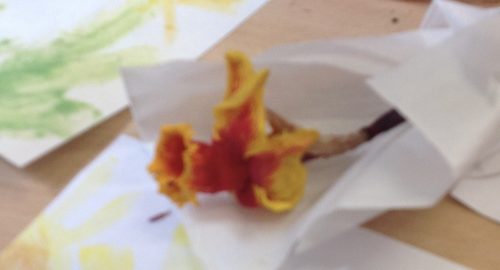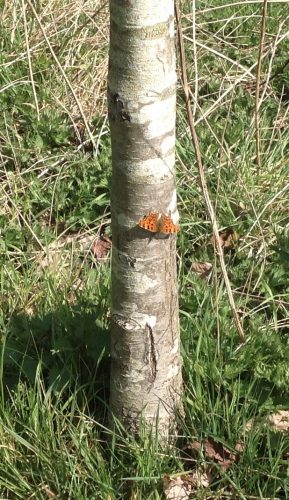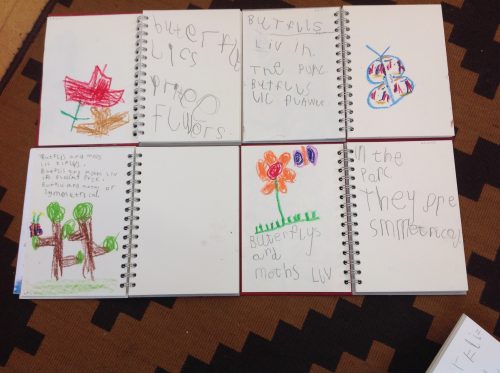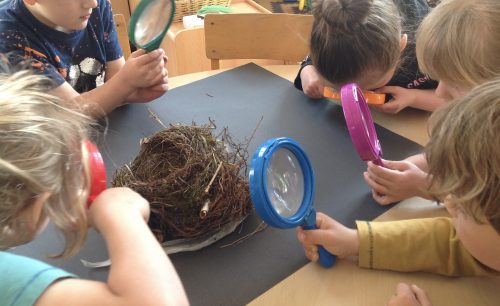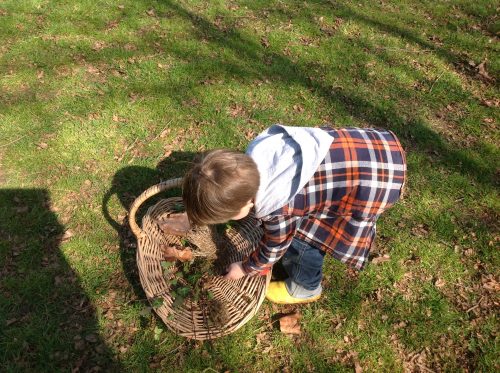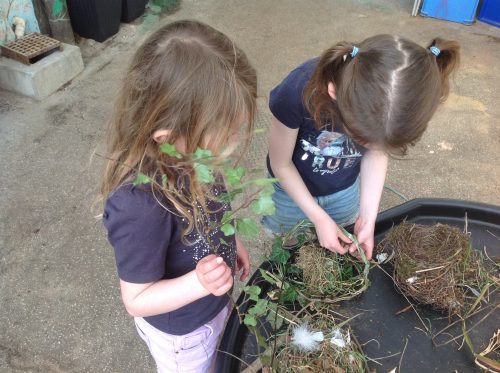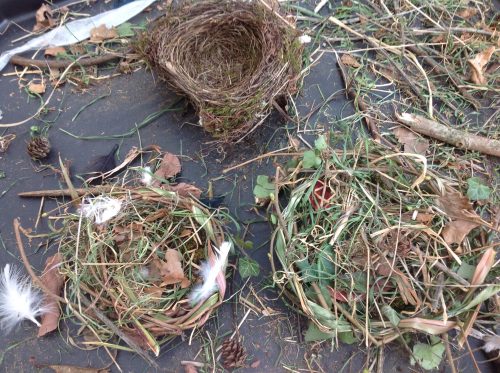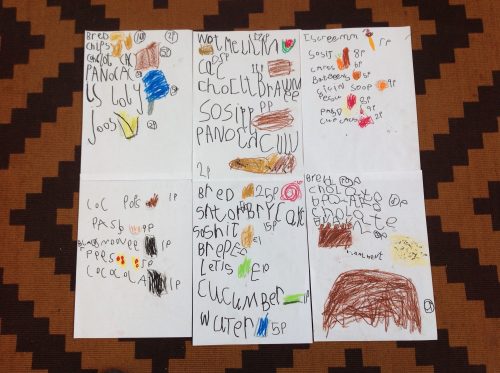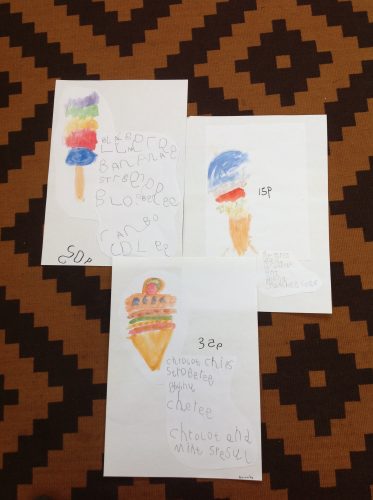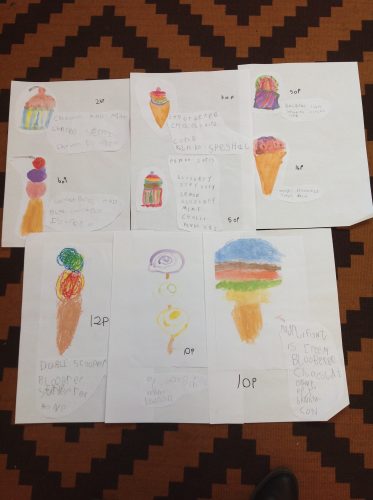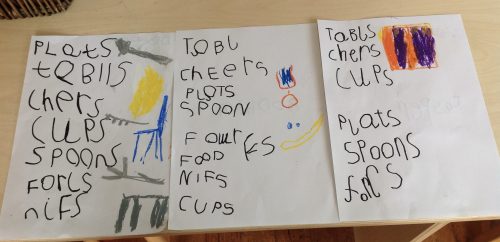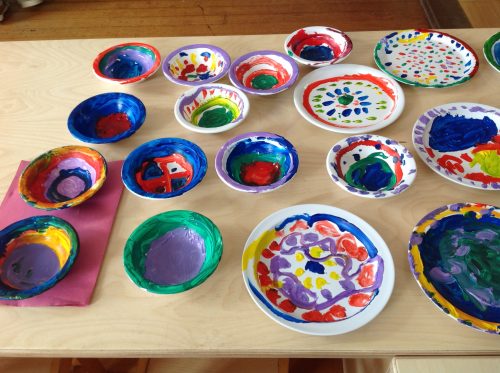W/C 24 & 31.01.2022
People have been spotted in Bealings Park before the opening time, and so we had a discussion to decide on what we could do to solve the problem:
“We need a gate”
“A lock to close it at night”
“A padlock or bolt”
“A password or a code to unlock it”
Someone mentioned that the school had a gate and so we decided to investigate it, looking closely at the different aspects of the gate, including shapes, patterns and materials:
“It is made of strong metal”
“It has lights and a lock”
“A spiral and a spider’s web”
“A spiral getting bigger and bigger”
“Chains and links”
“It is a wonderful gate”
“It belongs to the school”
“I know that there is a circle, triangle and square hidden on the gate”
“Spirals going round and round”
“Lots of cylinders”
These shapes and patterns can be seen in the detailed observational drawings created by the children
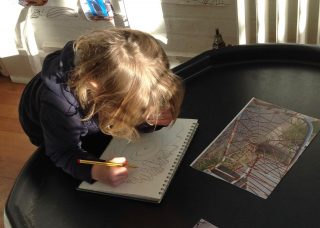
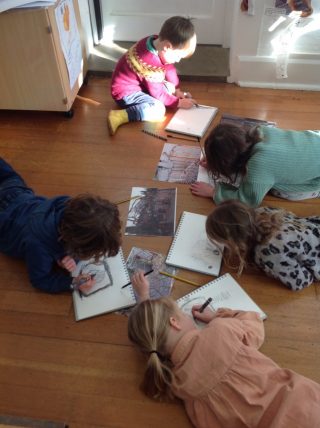
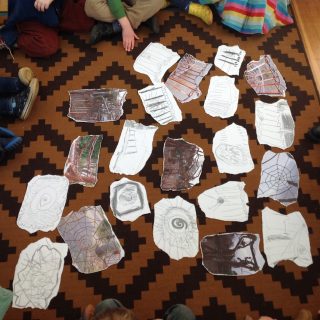
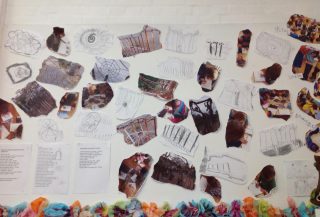
and also in the shapes the children made using their bodies
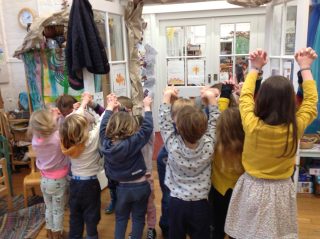
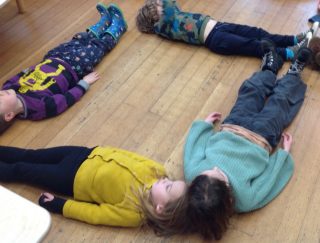
The world welcomed in the year of the tiger this week, to celebrate the Lunar New Year 2022. We shared the traditional story of how the animals in the Chinese Zodiac were allocated their places, and also compared the similarities between some celebrations (Lunar New Year, Diwali, Christmas) such as gathering together with family, wearing new clothes, giving and receiving gifts
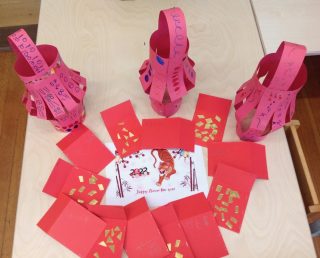
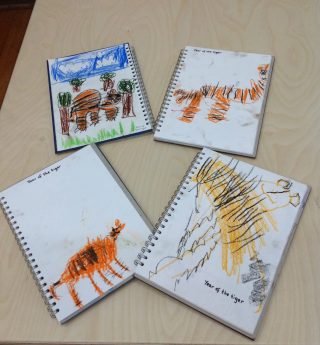
Kung Hei Fat Choy!
W/C 17.01.22
We started the week thinking about parks, and what Bealings Park might look like. Each child created an image of what they thought the park would look like, including labelling the main features, and from these we collaboratively created the map of Bealings Park
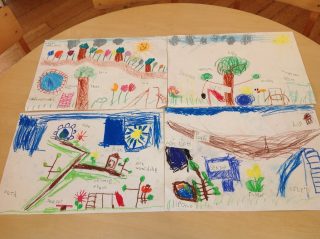
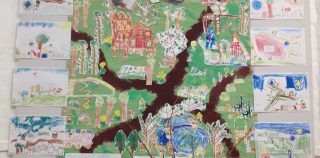
It was decided that visitors would need to know what time the park opened and closed, and so signs were made and displayed after spending time looking at clocks and discussing the numbers found on the clock face, and position of the hands to show o’clock
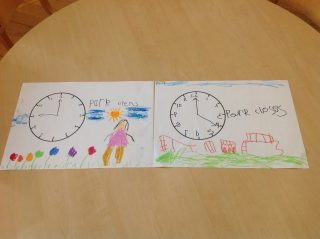
Another thing that visitors may find helpful when visiting is an information leaflet about the park, particularly the animals that can be found there. The children have really enjoyed finding out facts about these animals, such as their habitats, diet, the name for their young, and whether they are nocturnal or diurnal, and compiling this information into a leaflet
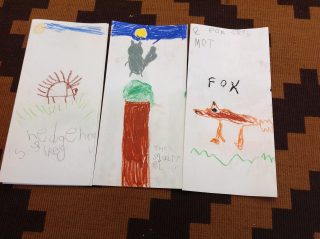
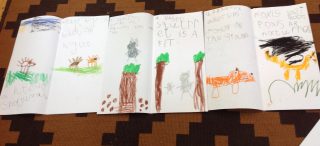
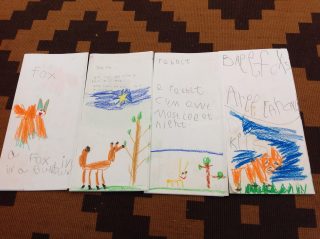
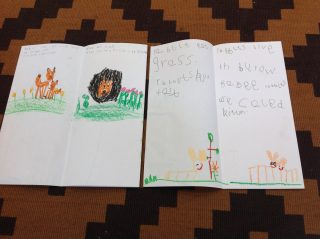
W/C 3rd & 10th January 2022
Welcome back, and a happy new year to you all!
In the new year we spotted the following article in the Suffolk Community News which we thought might interest the children.
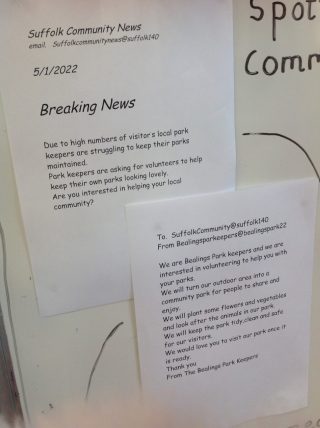
We shared the article with them, which generated lots of questions and discussion:
“What is a community?”
“It is a bit like a business”
“Lots of people working in a team together”
“What does volunteers mean?”
“It means you want to help people”
“Like charity work”
“What does maintained mean?”
“It is keeping something in good condition”
The suggestion was made to send a reply to the email address provided as we would like to help, but what is an email, and how could we do it? Thankfully someone explained that an email is “a bit like a text message”, “you get them on your phone or computer”, “it is like a letter with no paper’.
Maybe we could also become park keepers by running a park in our outdoor area? During the following discussion it was decided that we would need a company logo – “a sort of sign for our company”, “it goes on letters and badges”
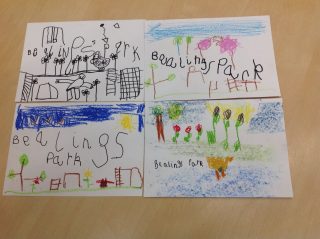
We then went on to think about what jobs a park keeper would do.
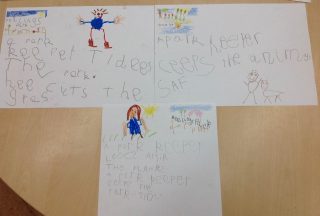
The children also understood that if we are to run a park that there would need to be rules to help our visitors and ensure our park is a happy place to visit.
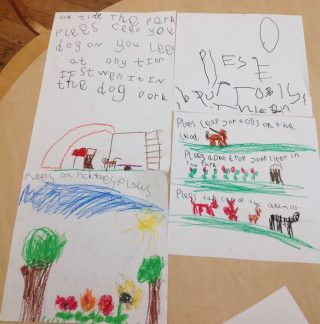
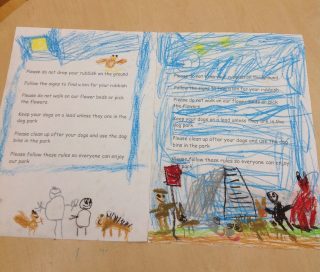
We look forward to welcoming our first visitors!
W/C 7th February 2022
A group of top gate designers have met at our park to finalise the design of the gate, and today it has been installed and is looking magnificent.
The design incorporates lots of shapes that have been seen in other gates, and also some innovative features to help protect the park from unwanted visitors such as a camera detector, keypads with number codes, and multiple keys and padlocks to be used on particular days. Please come in to admire our gate!
As the park keepers are busily doing their jobs each day, they have begun to notice some changes in the park during these late winter days. We stopped and looked around us at all the trees in the park and thought about how they are the same, and what is different. Back in the classroom we constructed a large tree, labelling the main parts and talking about which trees are evergreen or deciduous.
“The trees are sleeping but they are still alive”
“They will grow more leaves when it warms up”
“Sometimes blossom comes first then when it falls down new leaves grow”
“Even now they sort of have new leaves growing inside them”
“Then they will burst into buds”
“Some trees are evergreen that means they don’t lose their leaves”
“I have one in my garden. It has spikes and cones”
“Holly trees are evergreen as well. They have prickly leaves and red berries”
“The birds east the berries”
“You must never eat the berries from a tree unless you ask an adult”
“I think we should look at the trees again in three weeks and see what has happened”
Luckily, we have some keen arborists working in the park; they are so keen they have even taken their work home with them and produced an informative leaflet for all visitors.
The group have also shown an interest in the birds they noticed outside, so next week we will take our lead from the children to become ornithologists and investigate this further.
W/C 28th February
Following on from the interest of the children, we have been investigating birds over the past few weeks here at Bealings Park. One of the children created a Book of Birds at home which prompted us to write information leaflets for the visitors about the birds that can be found in the park.
Spring has arrived in the park with daffodils beginning to bloom. We used this opportunity to carefully study the parts of a daffodil and how they grow from bulb to flower. This was also a good time to further develop watercolour techniques
The children were very keen to share their experiences of the recent storms, and it fitted in so well with our current mantle as we could share the Percy the Park Keeper story, ‘After the Storm’. Here are a few of the experiences the children shared with us
“We had to use candles because the lights went out”
“My trampoline got blown away and we still haven’t found it”
“A big tree cam down in my garden and I helped my Daddy cut it up”
“I saw a big tree blocking the road and the next day it was cut up into little pieces”
We used these shared experiences to introduce a tension to our mantle; as the children arrived into the classroom one day they saw a hastily written sign on the door, which they worked together to read.
It was decided that the park keepers (a role that the children took on within the mantle) should be allowed to carefully enter the park to assess the problem. As they entered, they discovered a huge branch which had blown down in the storm. Alongside the branch they found a mother owl and her two owlets.
The park keepers held a meeting to discuss what could be done:
“The tree has been damaged by the storm”
“We must put a fence around the tree to stop people going near it in case they get hurt”
“The owls have lost their home”
“They will be scared already and they will get more scared if people get close to them”
“They might be hurt from falling from the tree and a vet will know how to help them”
“The vet will x-ray all of the owl’s wings to see if they are broken”
“We need to put the owls somewhere safe so they don’t get hurt before the vet comes”
“An owl has a very sharp beak and claws which are called talons and they are really point and very sharp”
“We must wear big gloves to keep our hands safe”
“We must go very slowly over to them so they don’t scratch us, or we scare them”
A nest is made, and we carefully move the family of owls
“We must move the branch so it is safe in the park for visitors again”
“We should get a tree doctor to check the tree is not going to fall down”
Bealings Park Keepers carefully moved the fallen branch
w/c 7th March
Spring is beginning to appear in the park and Bealings Park Keepers have noticed that the trees are coming back to life with both buds and blossom starting to grow.
We used this opportunity to look closely at blossom and the children enjoyed experimenting with oil pastels to create lovely observational representations of it.
The Park Keepers have also been keeping a daily diary of the weather in the park. This activity provided a great opportunity to work on both writing and ordering the days of the week.
Finally we decided to create a class poem about spring. The children shared their understanding of what happens at spring time and using the children’s words a spring poem was created.
W/C 14th March
The park keepers have been busy doing a bird survey to see what species of birds can be spotted when visiting Bealings Park.
Amongst the normal garden birds we were very lucky to spot 3 birds of prey.
We returned to the classroom and carried out some research together using the class computer to find out what species they were. We discovered that they were Buzzards. A class discussion followed where we shared our thoughts and ideas about this happening.
“Wow! It is amazing!”
“It was amazing and incredible!”
“They were circling”
“The prey birds were hunting”
“Prey birds eat small birds and other small animals like mice”
“They don’t flap their wings they hold them still and glide”
“They are very big”
We decided to research further to find out how big they were and discovered that the wingspan of an average Buzzard is 1 metre.
We went onto the playground and used a metre stick to draw a line with chalk to represent the wingspan. The children then worked together to create life sized representations of a Buzzard using chalks.
W/C 21st March
The park keepers discovered an unusual nest that had fallen from a tree in Bealings Park.
A discussion followed and thoughts and ideas were shared.
“I think it could be a crows nest because they have black feathers”
“A special bird who likes jewels”
Several children share the same thought…
“It must be a Magpie because they love sparkly things”
“A Magpie steals shiny things and puts them in their nests”
“Magpies have black and white feathers”
Several of the Park Keepers think that the nest should be put back in the tree.
“If we put it high up in the tree the Magpies might come back”
“We could keep a watch on the nest and see what happens”
Another article was forwarded to Bealings Park Keepers from The Suffolk Community News.
The Park Keepers eagerly decided that Bealings Park should have a café and shop and set to work on this decision straight away.
“We need a name for the café and shop”
It was decided that it should be called ‘Park Café and shop’.
“We need to think about what food we should sell”
“We need menus to show the visitors”
“We are growing vegetables we could use them in our food”
“Some healthy things and some treats”
“It is ok to eat treats as long as you have healthy things as well”
“You must clean your teeth after treats and at bedtime”
The Park Keepers created their own menus…
This activity provides an opportunity to investigate money and think about the cost of the food available next week.
‘We also need to make sure the rubbish from the food gets put in the bin so the park doesn’t get messy”
W/c 29th March
We decided to carry out an experiment with some daffodils; 3 daffodils were placed in a jar with red batik dye. We wondered what would happen?
The children predicted what they thought would happen:
“The flower sucks water up from the stem so I think the stem will turn red”
“If you take it out of the water it will turn green again”
“The stems, petals and trumpet will turn red”
“I think it won’t like the dye so it will go droopy and die”
The following day, we checked the daffodils and discussed our findings
“They are turning red and I think that tomorrow they will turn more red”
“I think that tomorrow the whole flower will be red”
So, we checked again the next day
“It is really red now”
“It is redder but it is going crispy and dying”
“Its stem is really red”
“It really doesn’t like the dye, that’s why it is going crispy and dying”.
While checking our park one morning, the park keepers spotted some butterflies. We took this opportunity to further the children’s knowledge of butterflies, specifically the butterfly’s symmetrical wings
The park keepers also discovered an empty nest
We looked closely at the construction of the nest, and the materials used, and decided that we would like l to have a go at building a nest to.
“The birds are very clever at building nests’
“They have carefully woven twigs together”
“They have added soft stuff to keep the eggs safe and warm”
WB 25 April 2022
The carefully constructed nests made before easter were ready for some birds to nest in and lay their eggs. We looked carefully at the size and colours of native bird’s eggs, using painted clay to represent the bird’s eggs
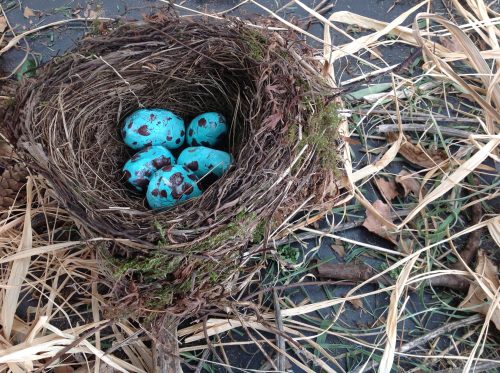
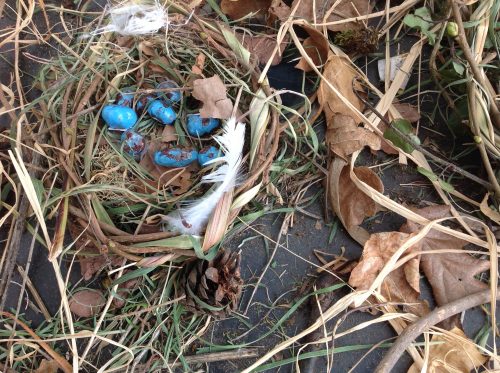
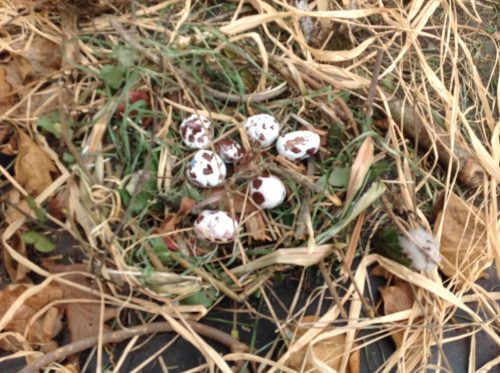
These provided plenty of opportunities to use mathematical language, such as counting, one more and one less, more than, fewest, and sorting activities.
Preparations also continued in readiness for the opening of our Park Cafe. We have been busy writing menus
and investigating money to price each item
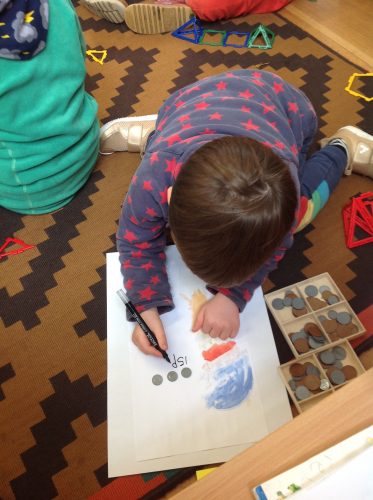
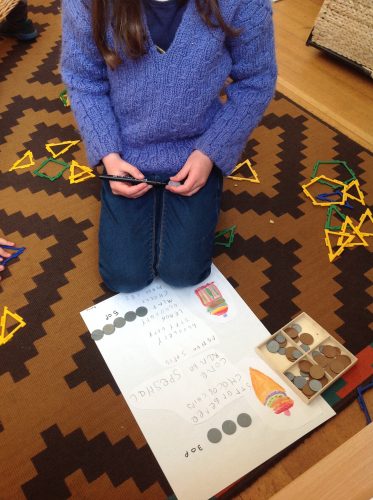
and writing lists of the equipment we will need to run the cafe
The children thought that the cafe would need bowls and plates, and luckily we were able to upcycle the old plates from the canteen